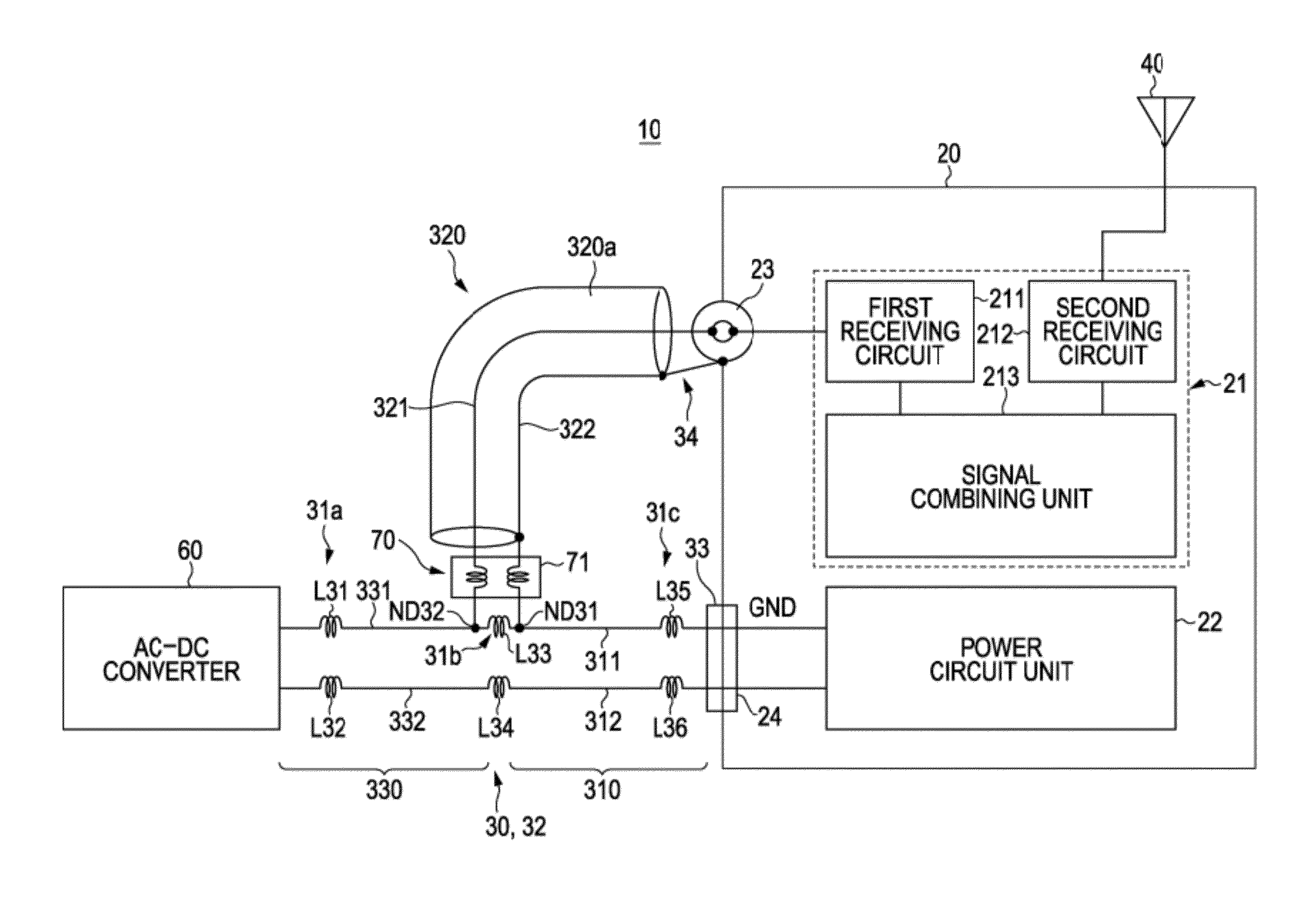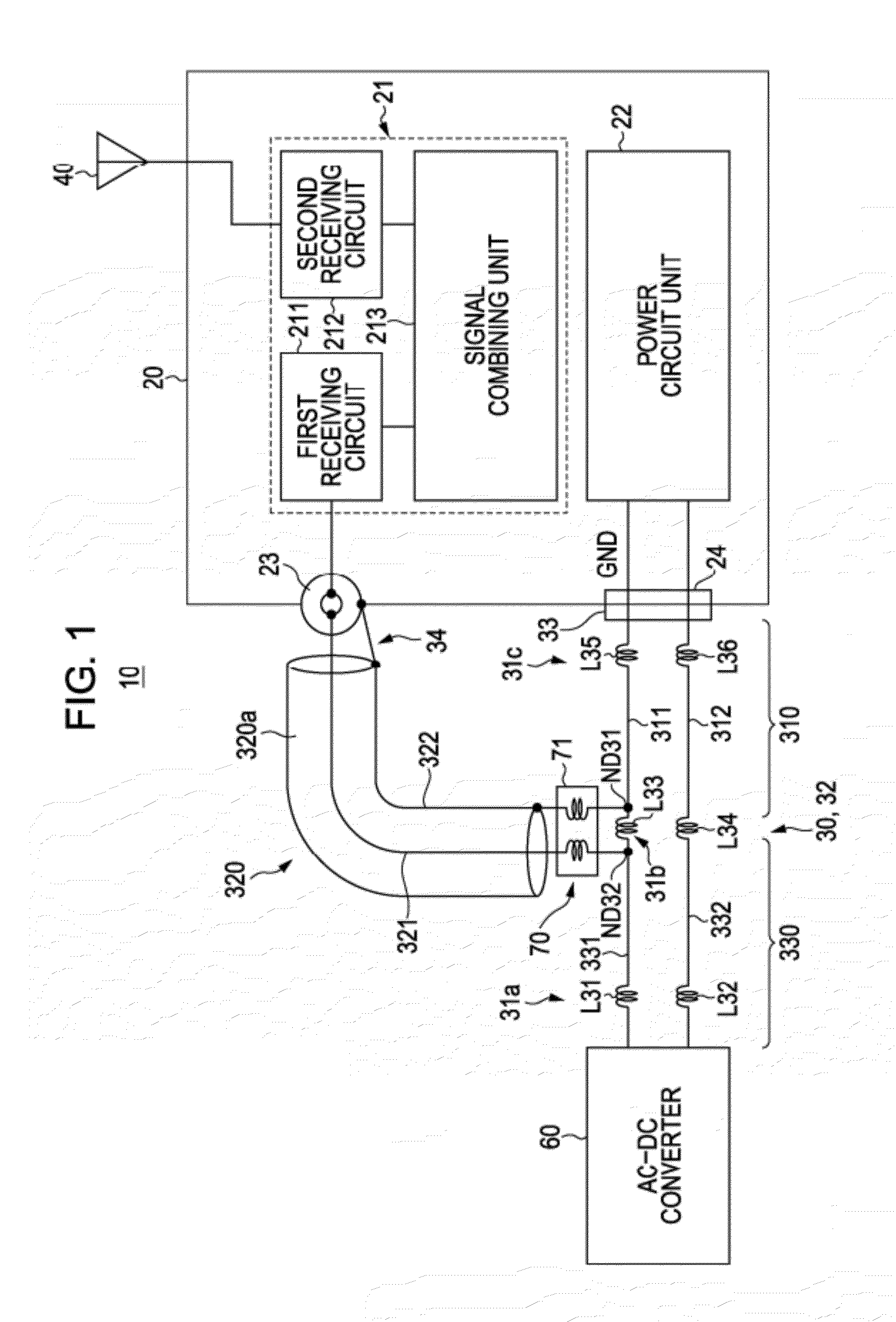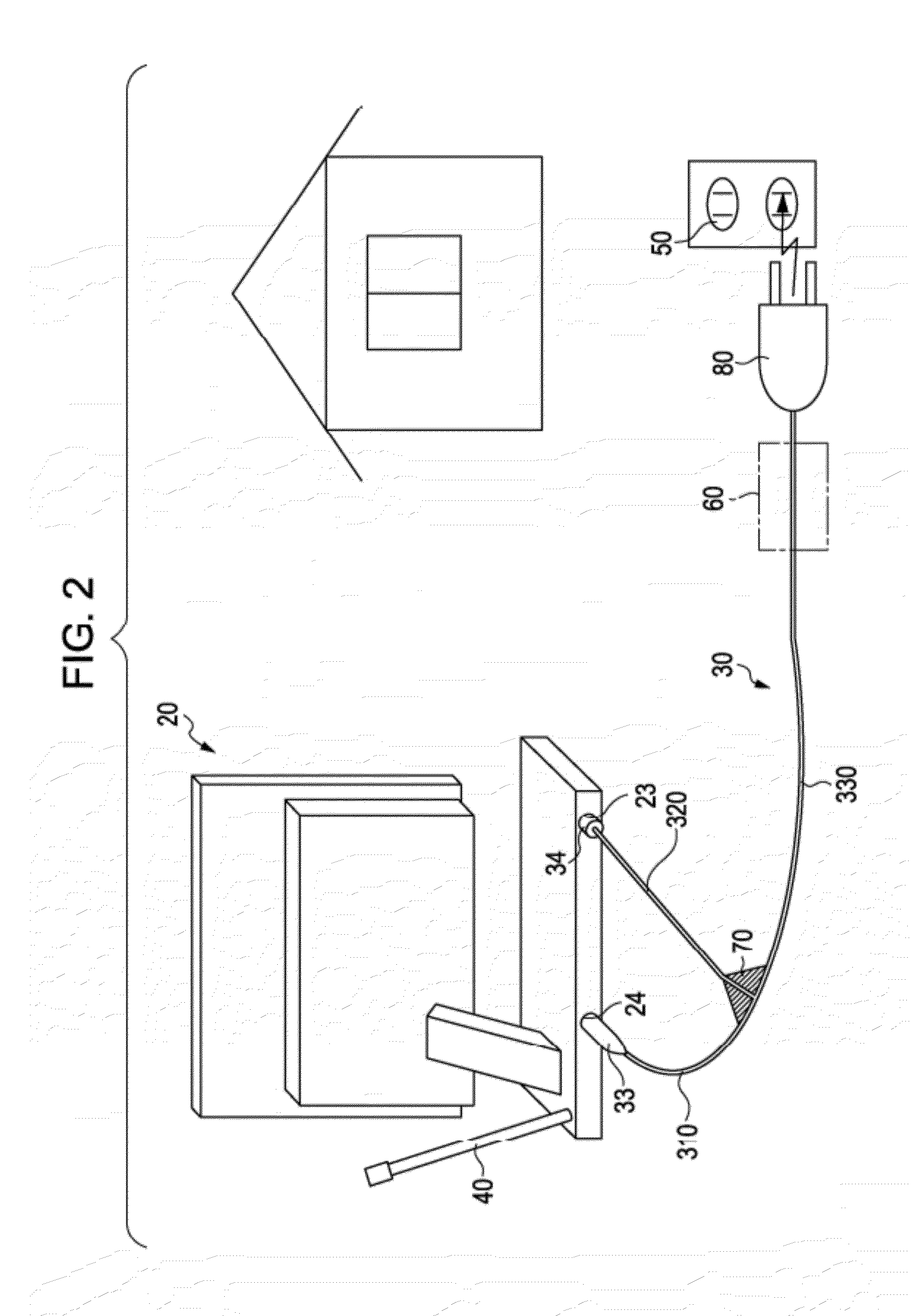Receiving apparatus
a technology of receiving apparatus and antenna, which is applied in the field of receiving apparatus, can solve problems such as the difficulty of mounting two antennas, and achieve the effect of improving the correlation coefficient of antennas and realizing features
- Summary
- Abstract
- Description
- Claims
- Application Information
AI Technical Summary
Benefits of technology
Problems solved by technology
Method used
Image
Examples
first embodiment
1. First Embodiment
[0058]FIG. 1 is a diagram illustrating the circuit configuration of a receiving apparatus according to a first embodiment of the invention.
[0059]FIG. 2 is a diagram illustrating the concept of the receiving apparatus according to the embodiment of the invention.
[0060]A receiving apparatus 10 according to the first embodiment includes an electronic device 20, a power transmission cable (power supply cord) 30 transmitting power to the electronic device 20, and a first antenna 40 separate from the main body of the electronic device. In FIG. 1, Reference Numeral 50 denotes a power source socket. In FIG. 1, Reference Numeral 60 denotes an AC-DC converter.
[0061]In FIG. 2, a television receiver is shown as an example of the electronic device 20. Here, a general television receiver is exemplified for easy understanding. A compact electronic device such as a portable phone, a note-type PC, or a PND (Personal Navigation Device) with television function may be used as the el...
second embodiment
2. Second Embodiment
[0269]FIG. 30 is a diagram illustrating the circuit configuration of a receiving apparatus according to a second embodiment of the invention.
[0270]A difference between a receiving apparatus 10I according to the second embodiment and the receiving apparatus 10 according to the first embodiment is that a second antenna 32I is formed as a monopole antenna without divergence of a power transmission cable 30I.
[0271]In the power transmission cable 30I according to the second embodiment, inductors L31 and L32 formed by two parallel lines 311I and 312I and serving as a high-frequency blocking section 31a are disposed on the side of the AC-DC converter 60.
[0272]In an electronic device 20I according to the second embodiment, in order to separate the high-frequency signal caused by the power transmission cable 30I from the power, inductors L35 and L36 serving as a high-frequency blocking section 31c are formed in series on a board including the power circuit 22 connected to...
third embodiment
3. Third Embodiment
[0289]FIG. 33 is a diagram illustrating the circuit configuration of a receiving apparatus according to a third embodiment of the invention.
[0290]A difference between a receiving apparatus 10J according to the third embodiment and the receiving apparatus 10I according to the second embodiment is that a power transmission cable 30J is formed by two shield-attached lines and a braided shield portion 313 is configured as an antenna.
[0291]A signal line 312 is connected to the power circuit 22 via an inductor L36. A signal line 311 is connected to the set ground GND.
[0292]The shield portion 313 of the power transmission cable 30J is connected to the first receiving circuit 211 of the diversity processor (tuner) 21 via a matching circuit 25 and C22.
[0293]In the receiving apparatus 10J in FIG. 33, since isolation is further achieved by separating a DC circuit and an RF circuit each other physically, it is possible to reduce the influence of a power noise or the like.
PUM
 Login to View More
Login to View More Abstract
Description
Claims
Application Information
 Login to View More
Login to View More - R&D
- Intellectual Property
- Life Sciences
- Materials
- Tech Scout
- Unparalleled Data Quality
- Higher Quality Content
- 60% Fewer Hallucinations
Browse by: Latest US Patents, China's latest patents, Technical Efficacy Thesaurus, Application Domain, Technology Topic, Popular Technical Reports.
© 2025 PatSnap. All rights reserved.Legal|Privacy policy|Modern Slavery Act Transparency Statement|Sitemap|About US| Contact US: help@patsnap.com



